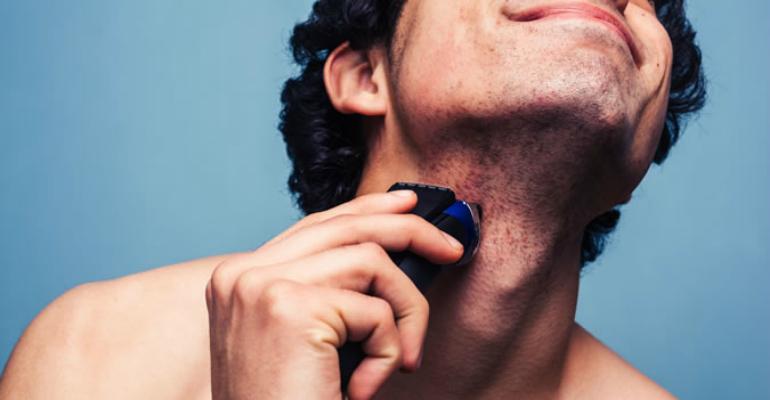Razor burns – these annoying ugly burns are anything but awesome. We have all had this experience at some point in our shaving history. While some have passed that stage in their grooming skills course, others still face this from time to time. If this is you, no worries – you can handle it with the right steps. We’d briefly discuss the likely causes, ways to prevent and possible treatment steps.
What is Shaving Rash?

Shaving rash – also called razor rash – refers to skin irritation triggered by aggressive or dry shaving, or use of dull blades. These irritations usually occur soon after shaving. In more severe cases, these reactions may appear in the form of a rash. Worthy of mention – razor and shaving rash are different from clinical razor bumps. While a dull blade often triggers shaving rash, ingrown hairs cause clinical razor bumps.
Causes of Shaving Bumps
Dry Shaving
Never shave dry. A dry shave increases the likelihood of shaving bumps. Don’t begin your shave session without a – good – shaving cream. These creams come with skin-protecting oil that shields your skin from bruises as you slide the blade over its surface. These creams also help keep your skin hydrated during the shave – allowing your razor cut through without pulling and tugging. This equals less scratching of the skin surface – and as well, fewer irritations.
Too Much Pressure
Never get too aggressive with your blades – else, prepare for the rashes. When shaving, take it gently. Fact is, the razors are designed to give you a clean shave without a need for extra pressure from users. Exerting too much pressure on your shaver will only increase the chances of skin irritations – allow the razor to perform its task effortlessly.
How to Prevent Shaving Rash and burns

Dull blades will get you burned! If it doesn’t feel right with your blades, it’s a tell-tale sign to swap out your dull blades. Get a new blade and experience less pull and tug during your shaving sessions.
Reduce Multiple passes
On average, men make as much as 120 repeated strokes during shaving. Your first stroke shaves off your shave cream and leaves your skin less lubricated. A repetitive stroke on the same skin area could trigger irritations.
Exfoliate
Before you shave, exfoliate. This act helps to get rid of dead skin cells lying on your skin and blocking your pores. Exfoliating comes before, not after, a shave. After-shave exfoliation may increase your skin’s sensitivity and increase the chances of irritation. You may scrub your skin with a towel after you wash, to remove the dead cells.
Soak
Allow your skin in warm water –for at least three minutes – before applying your shaving cream. This will help soften your hair and hydrate your skin – preventing hair tugging and possible irritations.
Lubricate
Here’s most important – don’t shave without shaving cream. And remember – body wash and shave cream are two entirely different things. Don’t substitute one for the other. Using a body wash for a shaving cream will only increase the chances of irritation and redness. Shaving creams are specially branded to soothe the skin and offer a smooth glide during the shave. This offers you a clean shave.
Soaps? They are a big no! Soaps leave your skin dry after washing off the natural oil produced by your skin. Your best pick, instead, should be a moisturizing shave cream with vitamin C, E, Shea butter, glycerin, and other essential oil and more natural ingredients to soothe and moisturize your skin.
Aim
Simply put – to aim means shaving in the right direction. The multi-dollar question remains – where is the right direction? There’s a widespread belief that the correct way to shave is upward. Wrong!
Correct shave direction is dependent mainly on the specific body part you’re shaving. For legs, you may shave against the grain – the opposite direction of your hair grow – for a close cut. When shaving hairs below the knee, shave up. When you shave the leg region against the grain, your legs are smoother and remains hairless for a relatively long period. Always ensure your blade is sharp to reduce the chances of aftershave Irritations.
For women, the high sensitivity of the bikini line demands that you shave with the grain– in the direction of your hair growth. On such delicate areas, avoid exerting too pressure – a right blade will do a perfect job, effortlessly. Also, you may have to replace your blades at least, once monthly.
Soothe
After your shave, you need to wash off your face with some blasts of cold water. This helps block the pores and reduce the likelihood of irritation.
Handling Facial Rash
Perhaps you already got that painful rash before you found this article- lose no hope yet. To get rid of the inflammation that comes with shave rash, use hydrocortisone ointment, say, four times daily.
Also, aloe-based lotions will come handy too – besides easing the pain; it speeds up healing.
If you experience severe discomfort, you may use a warm compress on the affected region. This also helps curb pain – and eliminate it, eventually.
Warm compress helps to open the clogged pores and lessen the swollen bumps.
Summarily
Your best shot at handling those annoying rash is to pause for a while and find out what you have been doing wrong all along.
Moisturizing the skin –and probably avoiding a shave for a time – will go along way to handling your rash. And when you’re back to your shaving routine, ensure you get the art right from the go.